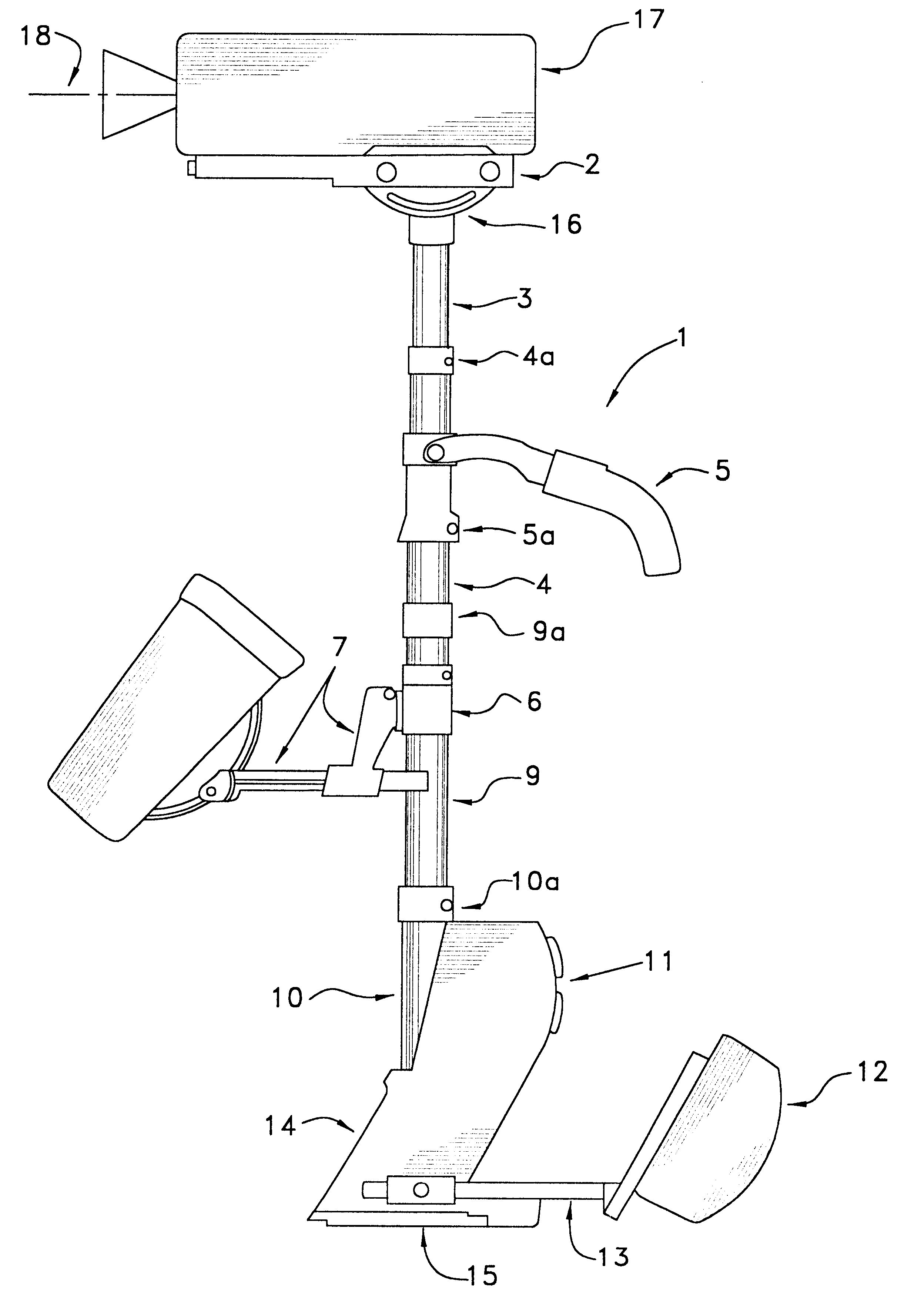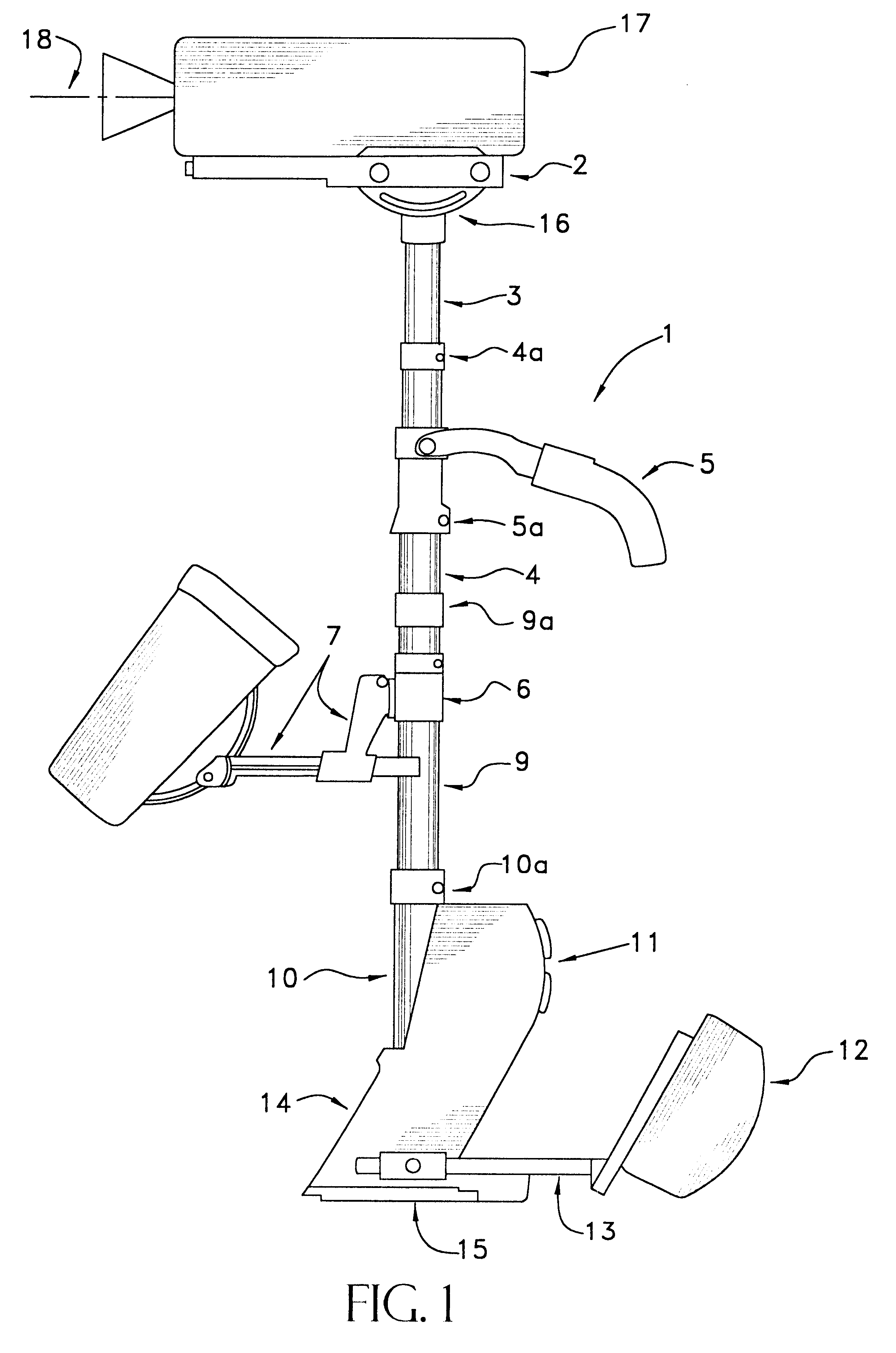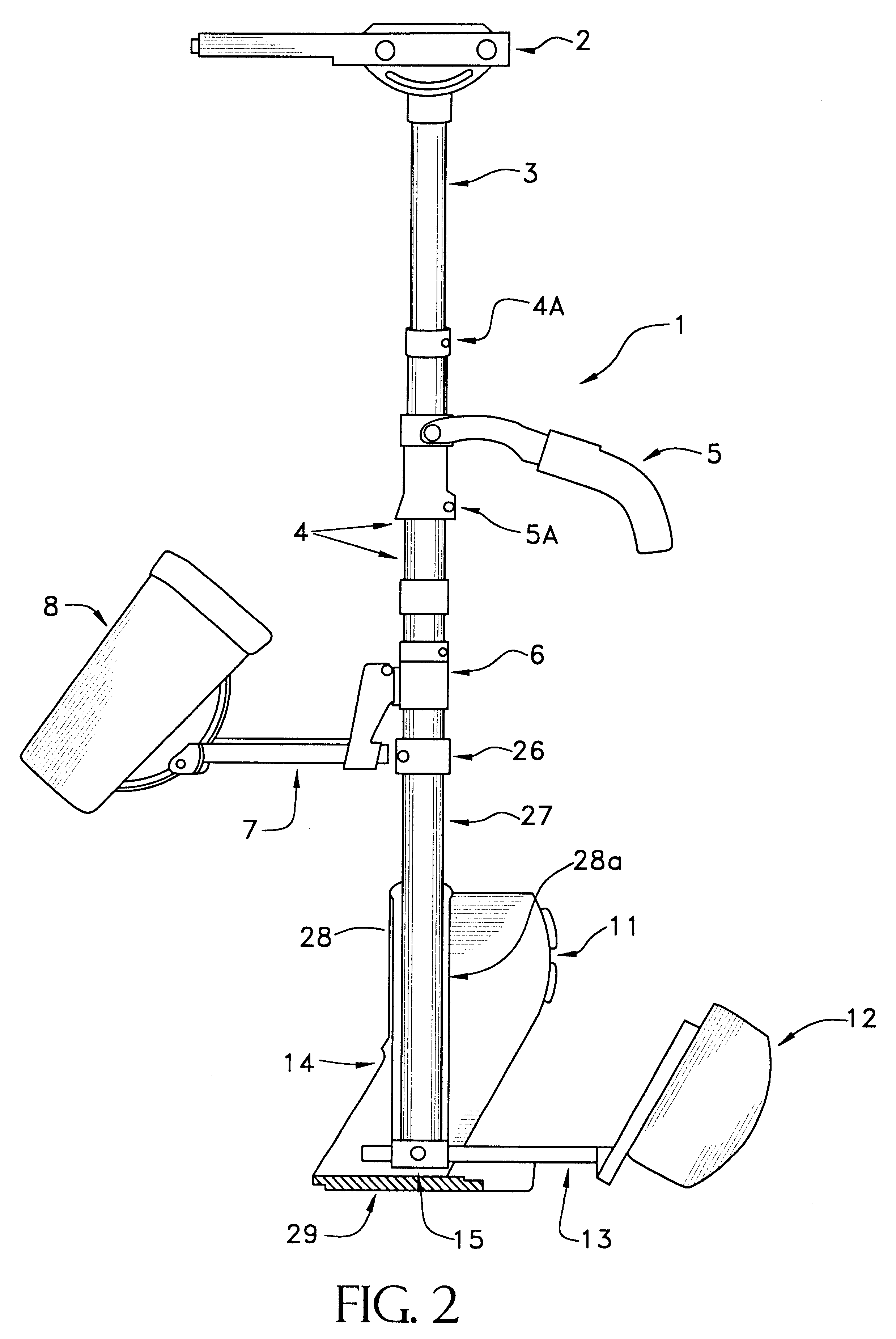Camera support including extendable post
a technology of camera support and extendable post, which is applied in the direction of machine support, cable arrangement between relatively moving parts, instruments, etc., can solve the problems of more time-consuming operations, time-consuming, and cost of components owned in duplicate, so as to avoid clearance problems and lens height variations, and maintain dynamic balan
- Summary
- Abstract
- Description
- Claims
- Application Information
AI Technical Summary
Benefits of technology
Problems solved by technology
Method used
Image
Examples
Embodiment Construction
A preferred embodiment comprises a novel structure for a telescoping post as follows: A main section adapted to provide an unobstructed range of positions for gimbal and monitor bracket placement, at least one additional telescoping section of lesser diameter between this main section and the camera mounting, and at least another additional telescoping section between the main section and the mounting for the counterbalancing equipment, such as the battery. The telescoping post includes monitor and battery mountings adapted to be positioned at varying perpendicular distances from the post. The structure is therefore adapted to be balanced statically and dynamically throughout the entire range of possible post lengths, and with any combination of selected camera, monitor, and / or battery weights. As used herein the term camera refers to any sensing or imaging device or any means for capturing an image or information. As used herein the monitor refers to any viewable display, viewing m...
PUM
 Login to View More
Login to View More Abstract
Description
Claims
Application Information
 Login to View More
Login to View More - R&D
- Intellectual Property
- Life Sciences
- Materials
- Tech Scout
- Unparalleled Data Quality
- Higher Quality Content
- 60% Fewer Hallucinations
Browse by: Latest US Patents, China's latest patents, Technical Efficacy Thesaurus, Application Domain, Technology Topic, Popular Technical Reports.
© 2025 PatSnap. All rights reserved.Legal|Privacy policy|Modern Slavery Act Transparency Statement|Sitemap|About US| Contact US: help@patsnap.com



